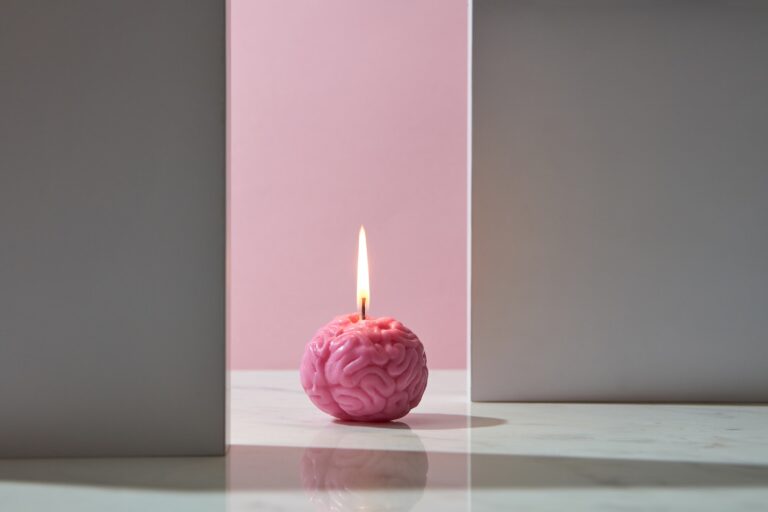The brain is divided into multiple regions that control sleep and arousal. Some of these nuclei have been identified as the key to state switching, such as the ventrolateral preoptic area (VLPO) and its specialized sleep/wake regulatory neurons.
Arousal is a shift in sleep state, such as from deep to light sleep or from sleep to wake. It is typically accompanied by changes in the brain’s electrical activity recorded with an EEG, or electroencephalogram test.
The Reticular Activating System
The brain has been able to regulate sleep and arousal through neuronal systems distributed across the brainstem and forebrain with different projections, discharge patterns, and neurotransmitters. These systems, characterized by monoamines and their neural circuitry, are called the ascending and descending reticular activating systems (RAS and DAS).
These neurons, located within the netlike region of the brainstem called the reticular formation, or RF, receive collateral inputs from multiple sensory modalities via long-range, branching dendrites. They then send their outputs via long, descending branches to the brainstem and hypothalamus, as well as to widespread areas of the forebrain and cortex.
Moreover, neurons within the RF have a variety of discharge patterns and synaptic interactions that allow them to simultaneously stimulate cortical activation, enhance postural muscle tone, and promote behavioral arousal in both waking and REM sleep. These neurons are characterized by the presence of glutamate and cholinergic neurons.
When you sleep in an unfamiliar environment, your reticular activating system has no idea what to filter out, so it lets everything through – from a noisy airplane take-off next door (very loud) to the neighbor’s yelling baby (a little quieter). This is why you can fall asleep while chatting with someone and wake up with a start when they knock on your front door (a lot more noise). It’s our body’s way of telling us that we’re still awake.
The Pineal Gland
Your pineal gland is a small cone-shaped gland in the centre of your brain that makes melatonin, an important sleep-promoting hormone. It helps control your internal body clock (circadian rhythms) and day-night sleep patterns. It’s not common for medical conditions to affect the pineal gland, although a rare type of tumour called a pineal cyst may form.
Brain activation during wakefulness is sustained by multiple arousal systems, including the hypothalamus and basal forebrain. Neurotransmitters such as histamine, serotonin, acetylcholine, noradrenaline, and dopamine act within these brain circuits. Disruption of these arousal systems is characteristic of several neurological disorders, such as narcolepsy, Alzheimer’s disease, Parkinson’s disease, and traumatic brain injury.
The anterior hypothalamus – specifically, its preoptic area – also plays an important role in promoting sleep. This structure and its GABAergic neurons are sensitive to the neurotransmitter serotonin, with stimulation of these neurons encouraging experimental subjects to fall asleep. Damage to these neurons leads to insomnia.
In addition to its role in regulating the circadian rhythm, the hypothalamus works with the brainstem to reduce activity in arousal centres and relax the body during sleep. This is known as the’sleep-wake cycle’. The thalamus also disconnects the cortex from external and internal signals during non-REM sleep, which is one of the reasons people don’t feel as ‘awake’ when they are in this stage of sleep.
The Hypothalamus
The hypothalamus (ancient Greek upo (hupo) and thalamos ‘bed’) is a small region of brain that sits below the thalamus at the bottom of the third ventricle. It contains a number of nuclei that act as a control centre for many functions, including the endocrine system via the pituitary gland.
The onset and maintenance of sleep require coordination of the activity of multiple groups of arousal-promoting neurons, and this must be accomplished over a timescale of seconds to minutes during the transition from wakefulness to sleep, and across an entire sleep cycle lasting many hours in rodents and humans. It is thought that this is achieved by neuromodulation of GABAergic neurons in the preoptic area and VLPO, which project to and inhibit arousal-promoting neurons in the rostral brainstem and posterior hypothalamus. In addition, cholinergic and monoaminergic neurons of the brainstem also interact with these sleep/wake-promoting circuits in a state-dependent manner to promote or inhibit their activity.
These interactions involve the release of histamine, acetylcholine, serotonin, dopamine and hypocretin. The release of these chemicals, along with a range of other factors, is controlled by the hypothalamus’ clock and suprachiasmatic nucleus. This information is relayed to the cortex, which acts as a switch that adjusts the sensitivity of the cortex to sensory inputs. When these switches are in the right position, they allow the brain to perceive a sense of balance between sleep and arousal.
The Cortex
The cortex is the most developed portion of the brain in mammals, and is associated with sophisticated functions like planning, being self-aware, and interpreting higher-order information. It’s also believed to be the primary site of our emotions and memories, and is responsible for most voluntary movements performed by the limbs and the body.
The cortico-thalamic loop (CRT) is a complex structure that surrounds the thalamus and facilitates the transfer of sensory information from the thalamus to the cortex for processing. Genetic and pharmacological manipulations of GABAergic, glutamatergic, monoaminergic, and neuropeptidergic neurons in the brainstem, hypothalamus, basal forebrain, and thalamus reveal that they all interact to control sleep and wakefulness.
It is thought that the dorsal pathway of wake-promoting neurons in the hypothalamus and rostral medulla project to thalamus and basal forebrain structures and the cortex, which then reinforce each other’s activity. In contrast, the ventral pathway of sleep-promoting neurons in the rostral medulla and BF projects to the thalamus and BF, which then suppress each other’s activity.
MIT scientists are studying how the different pathways for arousal and sleep work together by using basic neuroscience in rodents, as well as clinical studies of patients with various disorders. The research could lead to improved therapies for conditions such as narcolepsy, Alzheimer’s disease, and traumatic brain injury. The study’s first author is Jakob Voigts, an MIT graduate student in brain and cognitive sciences. The other senior authors are Emery Brown, the Edward Hood Taplin Professor of Medical Engineering and Computational Neuroscience at MIT and an anesthesiologist at Massachusetts General Hospital, and Michael Halassa, an assistant professor at New York University.
See Also:


